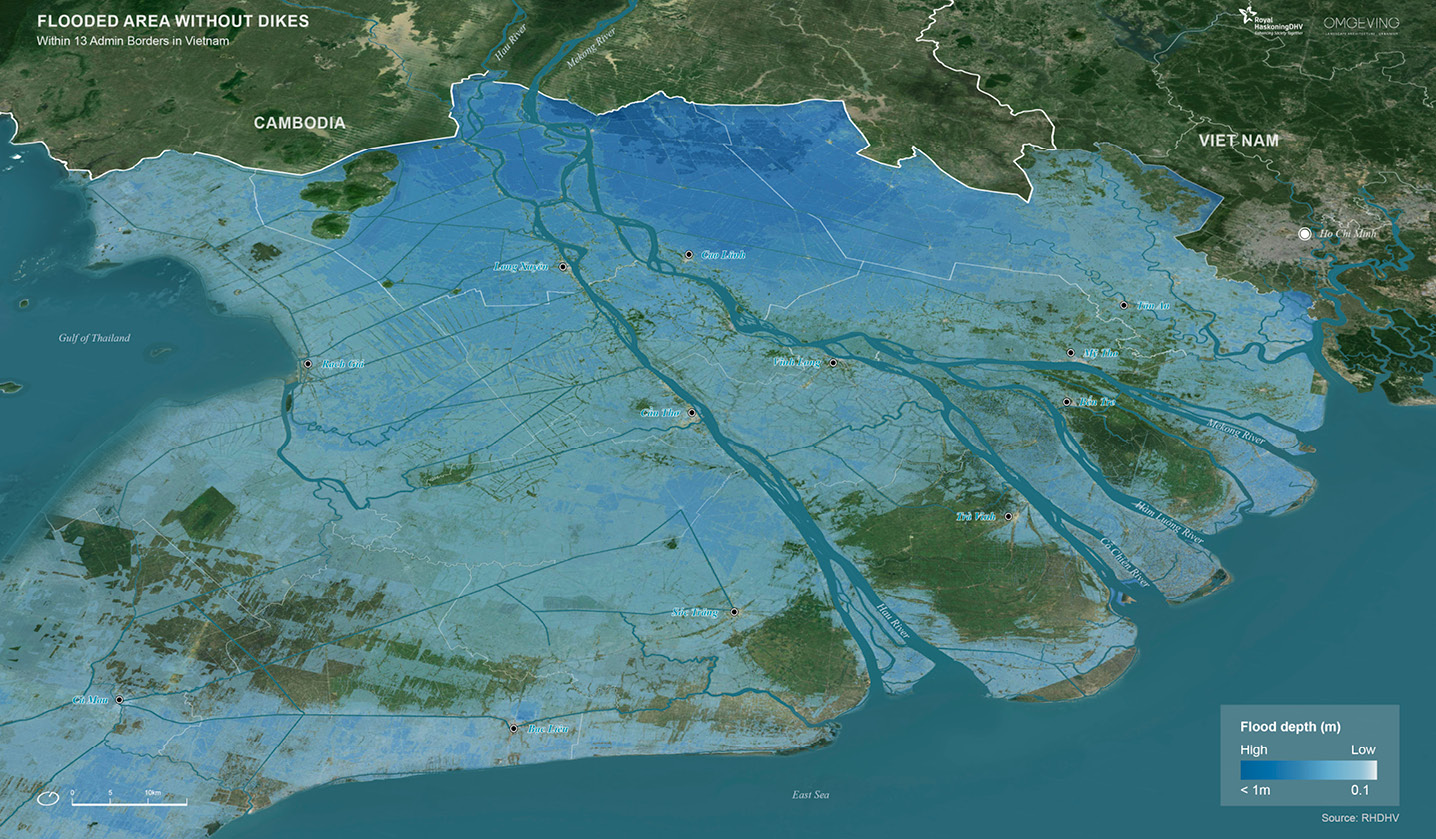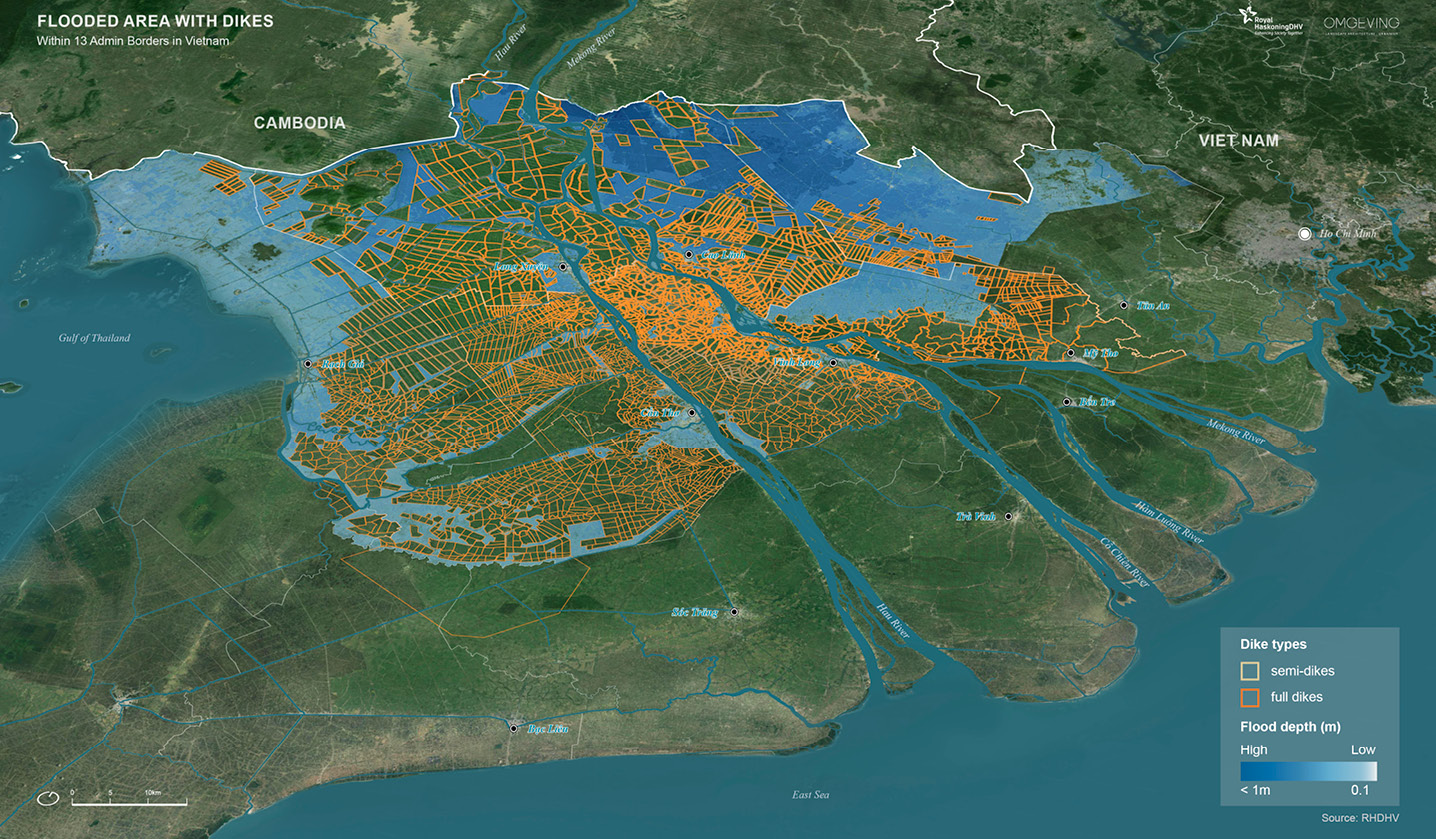Disconnection of the Floodplain in Vietnam
Main Problem
The disconnection of floodplains in an agricultural region due to the establishment of dike systems causes degradation of soil quality and texture and soil subsidence in the floodplains.
Challenges
-
Extensive agricultural and aquaculture production triggers the dikes' development. The dikes prevent water, sediments, nutrients and wildlife from moving from channels to floodplains. It also leads to pollution of the water.
-
The construction of large-scale hydropower dams in the Upper Mekong/Lancang and the Central Highlands has significantly altered hydrodynamics. The hydrodynamic regime has shifted from being more variable to more stable, resulting in low waters being less low and high waters being less high and delaying the onset of the flood season. The dams reduced sediment supply, which led to riverbed erosion and decreased bank stability.
-
Sand mining activities have caused morphological changes in the river channels, including riverbed incision. These changes affect water levels and exchange with floodplains, exacerbating saltwater intrusion into the channel and altering tide dynamics. Riverbank and coastal erosion further degrade infrastructure, cause land loss, diminish mangrove habitats, and reduce climate resilience.
-
Climate change is changing the patterns of the river's water flow, leading to increased variability in flow and water levels, as well as heightened salt intrusion in the delta. This is affecting the seasonal rhythms, making it challenging for communities that depend on the river for agriculture, transportation, and livelihoods.
Rationale to solve these challenges
Restoring the natural connection between floodplains and rivers would mitigate downstream flood risks while enhancing wild fisheries' productivity and biodiversity. This restoration would facilitate water flow and nutrients, improve soil fertility and height, mitigate land subsidence, wash away excess salt, and promote groundwater recharge. It would also facilitate the movement of native species between the river, floodplain, buffer zone, and protected areas. This approach increases system functioning and ecosystem services and improves the sustainability of livelihoods that depend on flood-based agri- and aquaculture.
Identifying livelihoods and business solutions, such as flood-based agri- and aquaculture, will allow local communities and businesses to be more resilient to the impacts of climate change.
A more resilient delta will reduce the costs of constructing and maintaining flood, storm/typhoon, and drought-proofing infrastructure. It will also reduce exposure of public and private assets to water and climate disasters, thus avoiding future costs.
NbS Measures
-
Developing and implementing livelihood and business strategies for dealing with floods and droughts, focusing on both agriculture and aquaculture. The strategies should consider the benefits of floods and sediment, and should be included in cost/benefit analysis and business plans. Consider factors such as not having to invest in flood and climate-proofing measures (opportunity costs).
-
Adopting production models that best fit agricultural, ecological, and socioeconomic conditions.mic conditions.
-
Rehabilitating, restoring and enhancing the ability of nature to provide ecosystem service in the floodplain area and improve the connectivity between the floodplain and the Mekong River.
How the NbS solve the issue
-
River mainstreams can re-establish connections with the floodplain, revitalizing its role. This helps improve soil quality by depositing essential fertile sediments, increases/maintains the elevation of the floodplain, and reduces the risk of floods in the agricultural area.
-
The implementation of flood-based agriculture can offer a sustainable alternative to conventional farming methods.
-
Priority Area: Plain of Reeds & Long Xuyen Quadrangle

Slide the visual above to visualize the extent of flooding during a 1/10-year flood event, with (right) and without (left) the current dyke system in Vietnam.
